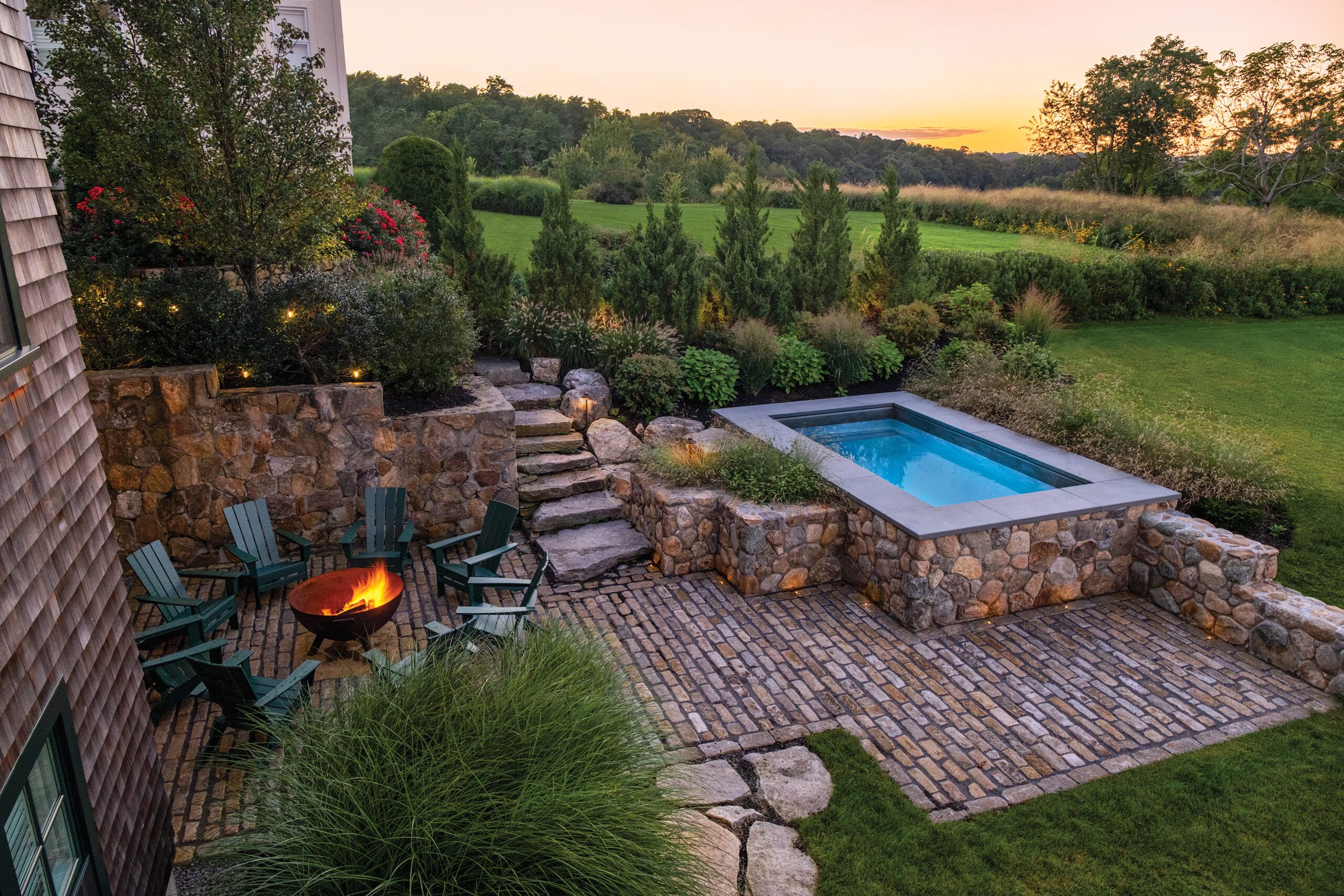Typically, if you want to take a dip in the backyard, you have two options, an in-ground or above-ground pool. Yet the size of these pools is related to high costs and plenty of routine maintenance. A plunge pool, however, is much smaller and much more affordable to build and maintain. For homes with smaller lots, a plunge pool offers the cooling, relaxing benefits of a traditional pool—but on a smaller scale. Here, we dig into the basics of plunge pools.
What is a Plunge Pool?
Smaller than a traditional pool, a plunge pool—sometimes called a digging pool—is just deep enough for lounging and cooling off, rather than doing laps or playing Marco Polo. While they’re not ideal for active games, they can be great for low-impact water exercise and rehabilitation.
Like traditional pools, plunge pools can be outfitted with features like lighting, built-in stairs, jets, and water features. They use the same filter equipment and can be saltwater or chlorinated. But the smaller size means plunge pools less expensive to buy than full-sized ones, and they cost less to maintain. Fewer chemicals are required, and if you choose to heat a plunge pool with a supplemental heat source, the water comes up to temperature faster, saving fuel.
How Big Are Plunge Pools?
Because they can be built on-site like traditional pools, plunge pools can vary widely in size. They typically run from 6.5 to 10 feet wide and 10 to 22 feet long. The depth ranges from 5.5 to 7 feet, and the bottom is almost always flat. A plunge pool that’s 10×20 feet is a popular size. Pre-cast or pre-fabricated models can start as small as 7×13 feet and 5 feet deep.
Compare that to in-ground pools, which usually start around 14 by 28 feet, or above-ground pools that often start at 12 feet in diameter.
How Are Plunge Pools Made?
Like traditional pools, plunge pools can be custom made in your backyard or manufactured off-site. Custom versions are usually made by forming the earth, then covering it with a vinyl liner for an in-ground look. Pre-cast versions made off-site—from fiberglass, concrete, or sometimes metal, like stainless steel or copper—get craned into your yard, and dropped into an excavated hole. There are above-ground plunge pools made from concrete or fiberglass, as well. Another popular option is a semi-in-ground plunge pool where the top 12 to 18 inches are above grade. Once finished, usually in stone, this allows for a short sitting wall around the pool.
Types of Plunge Pools
While plunge pools can take the form of any regular pool—oval, round, or rectangular—a rectangular version is often the most efficient in terms of space. Any style can be fitted with features like stairs, a sitting ledge, or a splash pad, but it’s often easier to get those elements in a pre-made version.
Cost of Plunge Pools
As with all home improvement projects, prices for materials and labor vary. A small plunge pool can cost $10,000 to $35,000 or more.* A ballpark figure for installing an in-ground plunge pool is about $20,000. While this is less than a traditional in-ground pool, it’s not an inexpensive upgrade. Concrete pools tend to be the most expensive, while vinyl and fiberglass are less. The least expensive versions are the above-ground designs, which could be as little as $1,500 for an individual-sized pool.
The costs associated with installing a plunge pool are similar to a full-size in-ground pool, but on a smaller scale. Like an in-ground pool, you’ll need to hire an excavator, provide access to your backyard for heavy equipment, pull permits, and finish the pool deck around the watering hole. In most cases, the upgrade will add to your property’s value and be taxed accordingly.
*Cost data in this article sourced from contractor estimates used by Angi.
Benefits of a Plunge Pool
The size of a plunge pool enables homeowners who wouldn’t otherwise have the space or budget for a full-size pool to have a place to relax that beautifies the outdoor living space. After the initial installation cost, you’ll spend less to maintain a plunge pool than you would a traditional pool.
If you choose to add a heat source, it’s more economical to keep the pool at a comfortable temperature, which may extend your pool season. Plunge pools are easier to cover and maintain, and skimming out debris takes very little time when compared to a regular pool. Design-wise, it can be more cost effective to get higher-end treatments on a plunge pool versus a traditional pool. Details like tiling, water features, and an infinity edge—all of which add significantly to the bottom line—might be in the budget with a plunge pool.
Limitations of a Plunge Pool
A plunge pool won’t be able to fit as many people as a traditional pool. Once four or five adults get in, it might start to feel more like a crowded hot tub. Young children who are used to cannonballing into a regular pool could get injured in a plunge pool, which is shallower than normal and has no “deep end.” Like a regular pool, your town will have regulations covering setbacks as well as fencing requirements to prevent a child from falling in.
Our Conclusion
Plunge pools are a more cost-effective way to beat the heat than a traditional pool. In most parts of the country, a plunge pool will add value to your home beyond the joy and comfort you get from being able to go for a dip.

